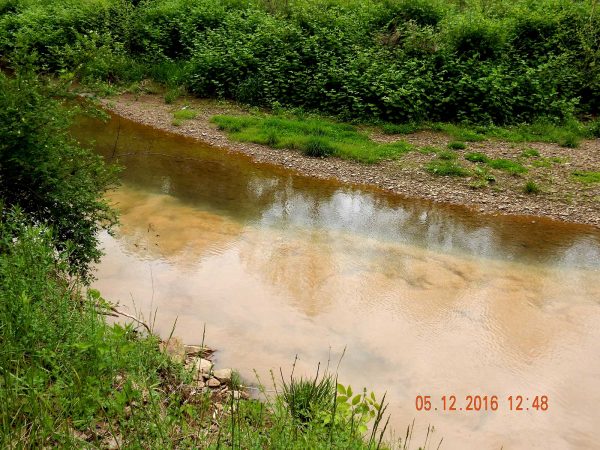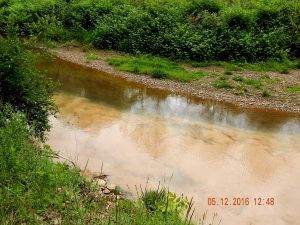f you haven’t already, please read the first entry in this series:
#Fracking #Pipelines in Your Neighborhood: Intro to a Dirty Picture Collection
Also see the companion blogs, all listed at the above link.
Here’s a shot of a stream all muddied up during OVC pipeline construction, in this case a pump-around stream crossing.
In comparison to the OVC, the MXP is much longer and crosses many more streams. What happened here could likely happen during stream crossing done anywhere by any pipeline company. It seems like the construction company had a significant lack of proper, accurate planning, and a total underestimation of stream flow volumes.
This pump around was done after many days of a lot of rain. More pumps had to be brought in at the last minute to handle the extra water. More mud was created on site and more was dragged off site. And since the filter sock type impoundment for pit water was also inadequate, mud freely flowed into the main stream as shown.
If this is the best we can expect from the MXP, then we do not need it. The stream eventually recovered. This was totally unnecessary, but probably very common, especially when construction is going on in a more remote location where the pipeline workers are not subject to scrutiny. 










